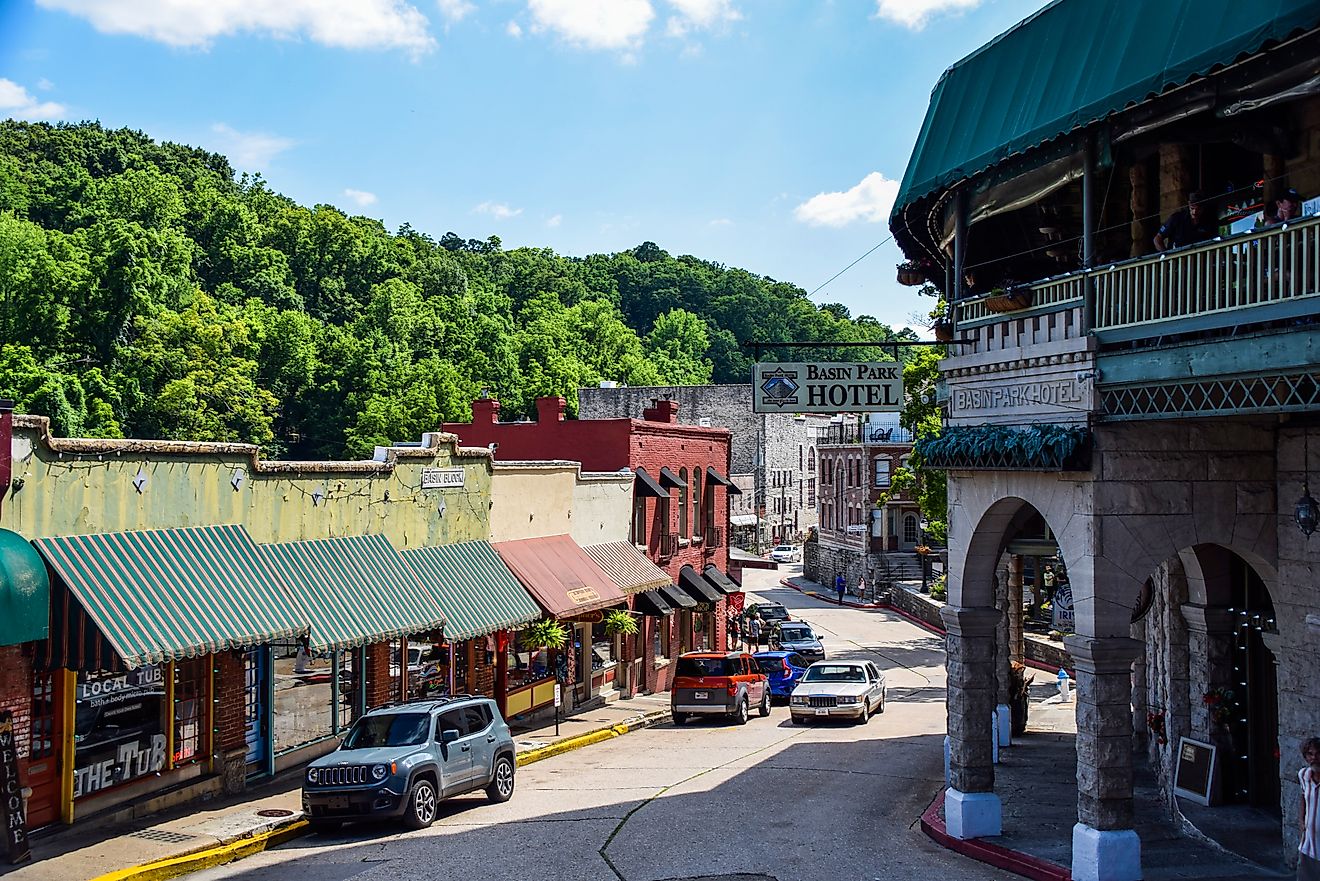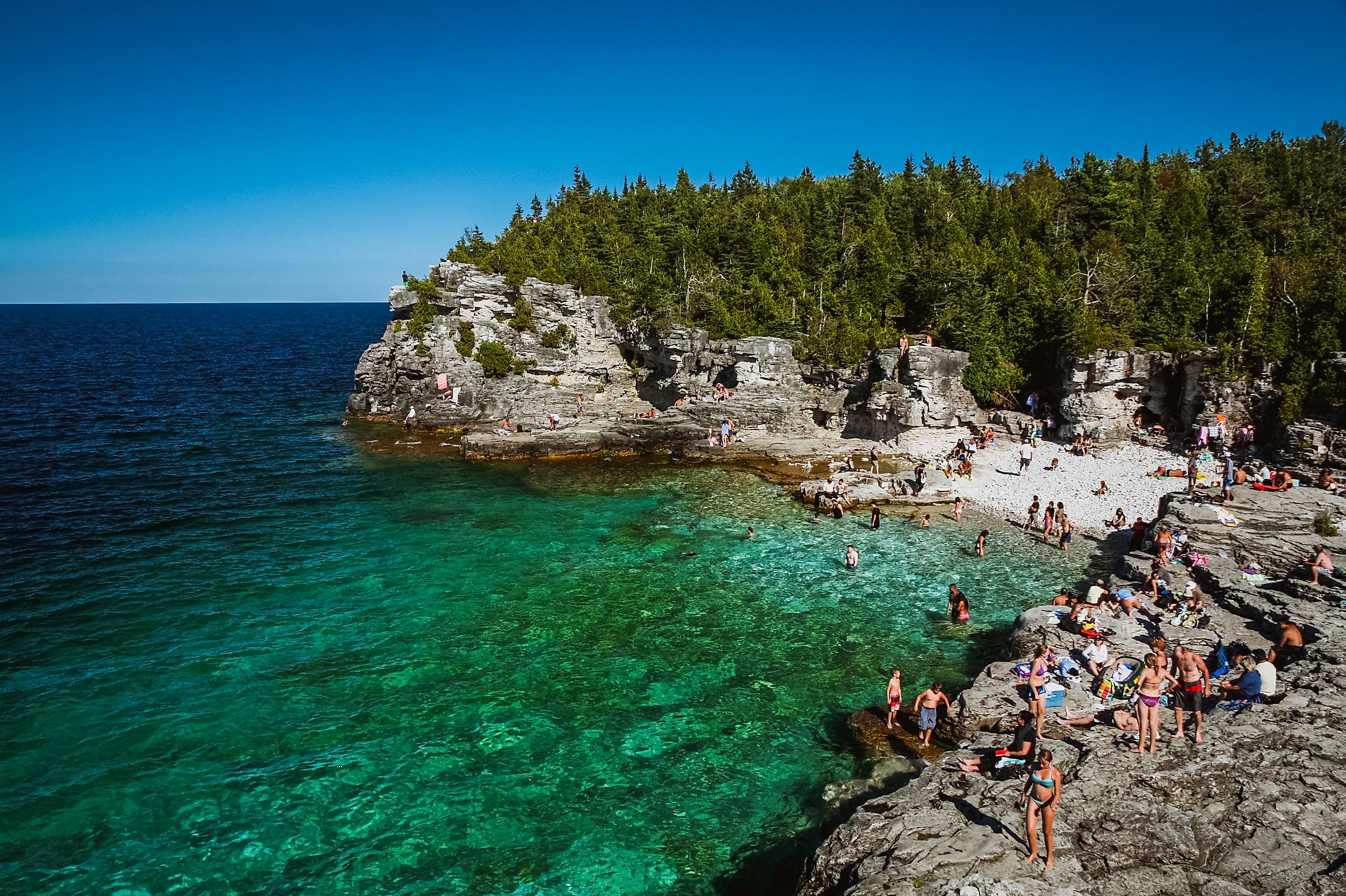
Bruce Peninsula National Park
Dense coniferous forests blanket an ancient dolomite foundation while the crystal clear waters of Lake Huron/Georgian Bay dance around the perimeter: such is the scene at Bruce Peninsula National Park. This dramatic conservation and recreation site sits atop the famed Niagara Escarpment. It, along with Fathom Five National Marine Park (its immediate neighbor) and the rest of the 725-kilometer karst backbone of southern Ontario, constitutes one of Canada's 18 UNESCO Biosphere Reserves. Come along for a brief tour of the trails, formations, campsites, wildlife, and adjacent fishing villages that make this place so magical.
Geography
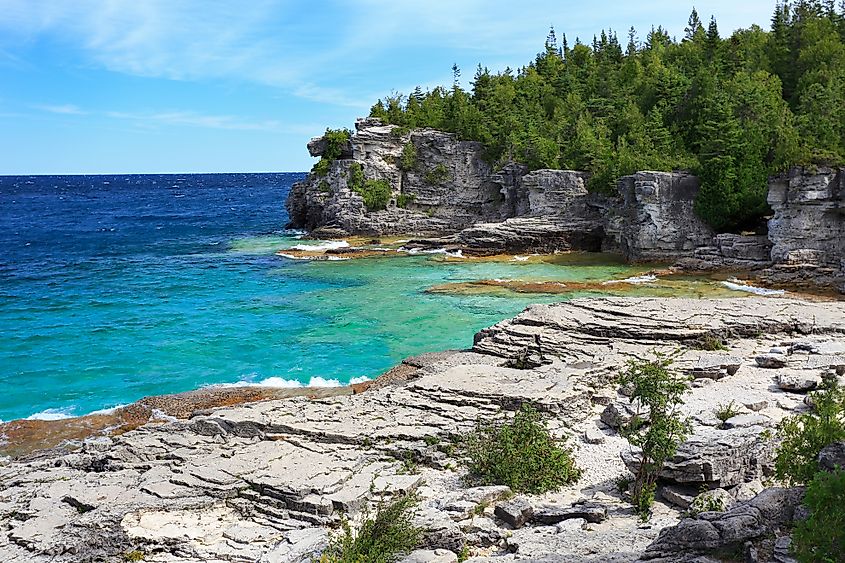
The Bruce Peninsula National Park and Fathom Five National Marine Park Visitor Center is located in Tobermory, Ontario, right at the tip of the Bruce Peninsula (which is also commonly referred to as the Saugeen Peninsula in honor of the Indigenous Ojibway Nation). It can be reached via Highway 6 if driving northbound (~300 kilometers north-northwest of Toronto, 225 km northwest of Barrie, 325 km northeast of Sarnia), or from the northern shore of Lake Huron via Manitoulin Island and the M.S. Chi-Cheemaun ferry (which operates between early May and late October).
The peninsula upon which the 156-square-kilometer namesake national park resides divides the waters of Lake Huron (i.e. the world's fourth largest lake) and Georgian Bay (i.e. the largest freshwater archipelago on the planet). This long and slim geological feature also marks the northern terminus of the UNESCO Niagara Escarpment World Biosphere Reserve, of which both Bruce Peninsula National Park and Fathom Five National Marine Park are included (and widely considered to be the standout sections). Having sprawled all the way up from Lake Ontario (near Niagara Falls), the substantial dolostone formation plunges into the Great Lake only to re-emerge and resume a northwest arc to the western shore of Lake Michigan.
So far removed is the northern Bruce Peninsula from the bustling metropolitans of the Greater Toronto Area that it has been designated as a Dark Sky Preserve. No less than 150 billion stars of the Milky Way emanate on cloudless nights.
History

Bruce Peninsula National Park was established on July 20th, 1987 - the same day as Fathom Five National Marine Park (i.e. Canada's first national marine conservation area). Three years later, UNESCO created the Niagara Escarpment World Biosphere Reserve. Long before these federal and international sites took shape (i.e. at least 2,500 years ago according to archeological evidence, but as far back as 7,500 years ago according to oral tradition), Indigenous people were inspired and sustained by the unique peninsula. Because this region is both the ancestral and continued homeland of the Saugeen Ojibway Nation, Parks Canada and the tour operators of Tobermory regularly offer the following land acknowledgment:
We acknowledge the Territory of the Anishinabek Nation: The People of the Three Fires known as Ojibway, Odawa, and Pottawatomie Nations. And further give thanks to the Chippewas of Saugeen, and the Chippewas of Nawash, known collectively as the Saugeen Ojibway Nation, as the traditional keepers of this land.
Between the early Indigenous era and formation of the Bruce Peninsula's two national parks, European settlers were drawn here for the fishing, timber, and (to an extent) agricultural prospects. Beginning in the second half of the 19th century, schooners and (eventually) steamships frequented the capricious waters surrounding the budding village of Tobermory. No less than 22 shipwrecks have been identified within the boundary of Fathom Five. Two can even be clearly seen from Big Tub Harbour, which lies right between BPNP and Fathom Five.
Flora and Fauna

Bruce Peninsula National Park is part of the Great Lakes-St. Lawrence forest - the province's second-largest forest region and largest remaining tract in southern Ontario. Ancient cedars and 300-500-year-old stunted trees (only recently discovered hiding in plain sight) exist amongst second and third stand white spruce, balsam fir, pine, birch, poplar, oak, maple and beech trees. Across the dolomite forest floor (formed as part of a tropical sea some 460-370 million-years-ago) and karst cliffs, seasonal wildflowers, wetlands, alvars (a globally rare habitat), mosses and lichen (including the quintessential golden-orange lichen that covers limestone boulders along much of the Georgian Bay shoreline) have all found their niche.
Such a large, undisturbed swath of diverse habitats allows for many important animal species to thrive. Have an eye for black bears and listen for the eastern massasauga rattlesnake's defensive warning, but also take stock of the red-shouldered hawks, barred owls, common snapping turtles, midland painted turtles, northern flying squirrels, eastern chipmunks, porcupines, green and leopard frogs, garter snakes, and yellow-spotted salamanders (to name a few).
The various habitats and relatively moderate climate also encourages scores of orchids to bloom. Beginning each spring, 34 species (i.e. two-thirds of province's total) grace the park with their vibrant presence. Fair-weather visitors can enjoy bursts of blue, yellow, green, white, pink, purple, and red. Look for the crowd-pleasing calypso and the provincially-endangered eastern prairie fringed orchid. And of course, leave them where they lie.
Other standout plants within the park include the dwarf lake iris (about half of the world's remaining population), and most of Canada's supply of the tuberous indian plantain. The Bruce Peninsula also contains 20 species of ferns, including the rare purple-stem cliffbreak.
Attractions and Amenities

Three generously sized and well-maintained campgrounds line the eastern shore of Cyprus Lake. Between Poplars, Birches, and Tamarack (i.e. the names of the campgrounds), there are 232 campsites and 10 yurts to choose from (reservations are always a good idea). From here, overnight campers (or day-trippers) can hike the modest nature trails past Horse Lake and Marr Lake en route to Georgian Bay and the more advanced Bruce Trail that parallels it. The tropical-esque waters and expressive limestone cliffs are endlessly photogenic, but the premier attraction in this part of the park is The Grotto - a natural cave near Indian Head Cove.
If heading east along the Bruce Trail, or if parking at the end of Emmett Lake Road, you will encounter another arresting section of shoreline: Halfway Log Dump. Conversely, a small stony beach known as Little Cove draws crowds to the west of the Grotto.
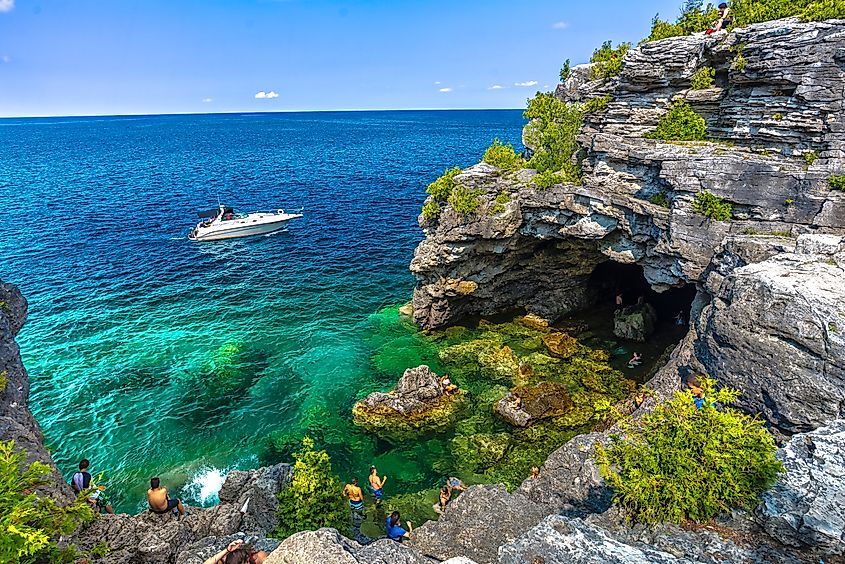
Note: Because of their popularity, the parking lots for Grotto, Halfway Log Dump, and Little Cove require reservations during peak season (i.e. April 30-October 31, June 15-September 2, and May 15-October 15, respectively).
On the Lake Huron side of the peninsula (a small portion of which is included in BPNP's boundary), a collection of delicate sand dunes, rare wildflowers and boardwalk/hiking trails draws traffic to Singing Sands beach. This parking lot operates on a first come, first served basis (and spots fill up early most mornings).
Though a distinct entity, Fathom Five National Marine Park works very much in tandem with Bruce Peninsula National Park. Tobermory-based tour agencies, such as Blue Heron Cruises, offer glass-bottom boat rides to Flowerpot Island, and sunset excursions past some of the aforementioned shoreline highlights.
Parting Thoughts
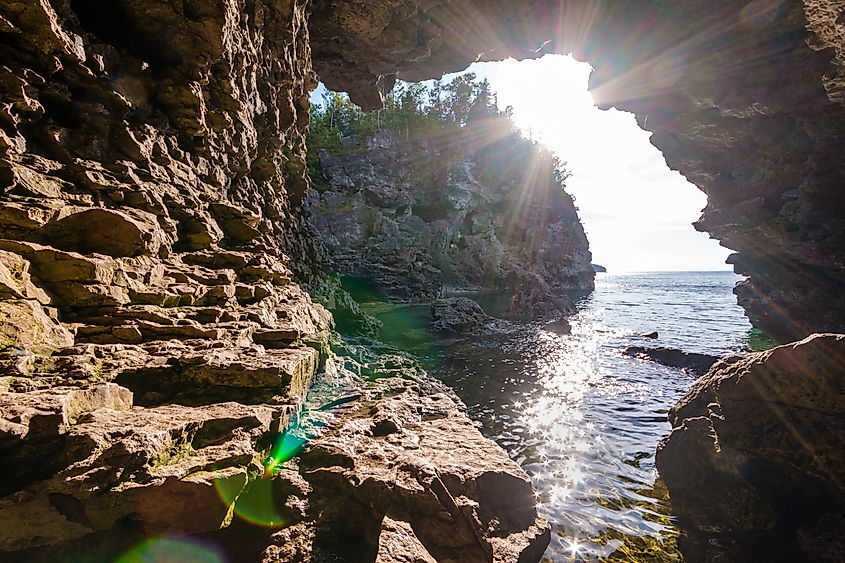
Bruce Peninsula National Park needs no sales pitch. Quite the opposite: it operates at or near capacity every summer. Because of this, rules and regulations are much stiffer than I've encountered in other national parks across the continent. Yes, these help protect the flora, fauna, and people in the region, but they can also make the experience seem a bit more clinical (and, weirdly, litigious) than may be completely necessary in a public park. Therefore, I recommend aiming for weekdays or the shoulder seasons, planning ahead, and keeping a low profile. But crowds and bureaucratic drawbacks aside, the raw beauty of the Bruce Peninsula's wilderness is second to none and will keep me coming back for the rest of my life.
